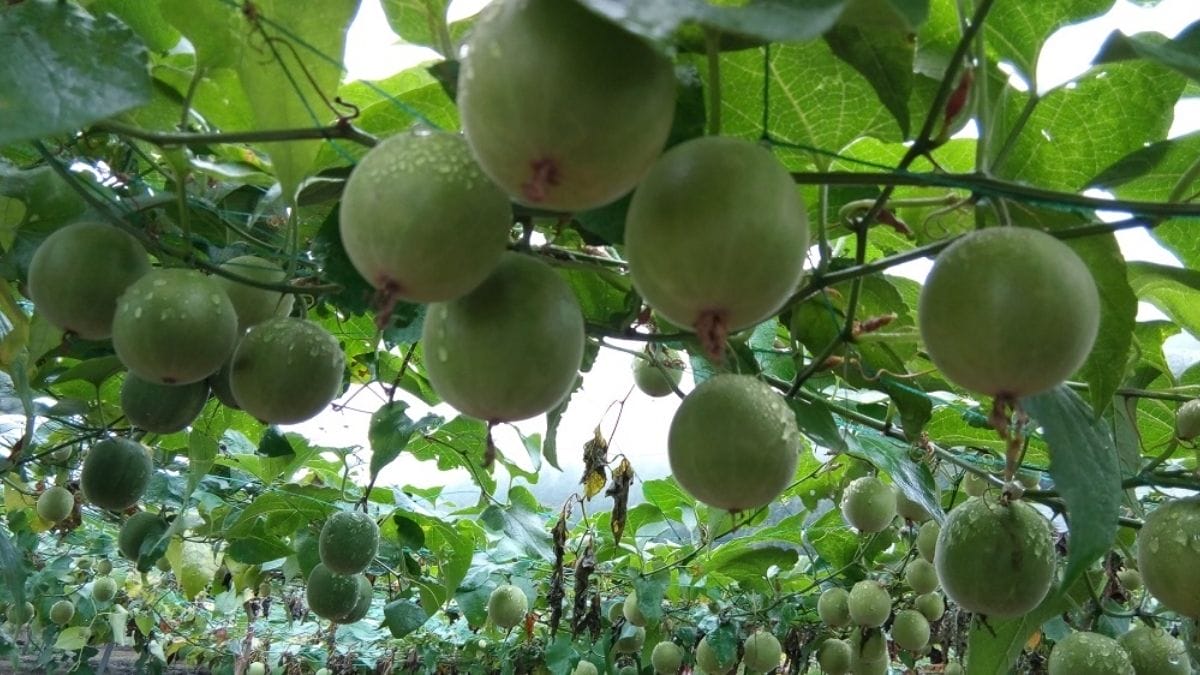The Palampur-based Council of Scientific Research and Industrial Technology Institute of Himalayan Bioresource Technology (CSIR-IHBT) in Kullu initiated the first field trial for ‘monk fruit’ in Himachal Pradesh on Monday.
The ‘monk fruit’ is originated in China and is widely known for its properties as a non-caloric natural sweetener.
The field trial commenced three years after the CHIR-IHBT imported the fruit’s seeds from China and grew it in the house.
As per a report in The Indian Express, for the field trials, fifty seedlings were planted in the field of a progressive farmer Manav Khullar, who belongs from Raison village. The CSIR-IHBT reportedly signed a ‘Material Transfer Agreement’ with Manav. The economic benefits of the new crop are assumed to be around Rs 3 lakh to Rs 3.5 lakh per hectare.
As per CSIR-IHBT, this is the first monk fruit cultivation exercised in India. Dr. Probir Kimar Pal, Principal scientist stated that the monk fruit is a perennial crop with a life span ranging between four to five years. He further explained that its fruition begins eight to nine months after germination.
Dr. Pal narrates, “The flowering pattern, pollination behavior, and the fruit setting time were also documented to draw a complete life cycle of monk fruit in Palampur agro-climatic conditions.” He added, “the plant prefers mountainous area with an annual mean temperature of about 16-20 degrees Celsius and humid conditions.”
The monk fruit has derived its name from Buddhist monks who first used it. Earlier in the 20th century, Professor GW Groff had tried to cultivate monk plants. However, it was a failed attempt as flowers did not appear.
CSIR-IHBT developed Agro-tech
The rate at which the seed of monk fruit germinates is slow and low, as a result, the seed germination technique has been established to increase the germination rate and thereby reduce the germination time.
Further, the institute has also developed a planting method along with a standardized planting time. Moreover, it has also developed a method for the generation of characterized planting material, and standardized the harvesting time for achieving higher Mogroside-V content in the fruit. In addition, post-harvest management practices have also been developed.
The monk fruit
The monk fruit (siraita grosvenorii) is known across the world for its intensely sweet taste. It has been utilized as a non-caloric natural sweetener. The monk fruit’s sweet taste is primarily derived from the content of a group of cucurbitane-type triterpene glycosides popularly known as mogrosides. Reportedly, the extracted mixture of mogrosides is nearly 300 times sweeter than cane sugar or sucrose.
In Japan, the purified mogrosides have been approved as a high-intensity sweetening agent. In the USA, the non-caloric sweet taste extract is generally identified as a safe (GRAS) non-nutritive sweetener, flavor enhancer as well as food ingredients.
Considering the international market, the demand for monk fruit is eventually increasing. However, as of now, the crop is cultivated only in China. The agro-climatic condition required for the cultivation of monk fruit is available in India, specifically in Himachal Pradesh.
A note from CSIR-IHBT reads, “Intake of added cane sugar can lead to life-threatening disease like insulin resistance, Type 2 diabetes, liver problem, metabolic syndrome, heart disease, etc. As per World Health Organization (WHO) report, worldwide 346 million people are diabetic. Various synthetic sweeteners of low calorific value have recently appeared in the pharmaceuticals and food industries, but the health hazards due to harmful side effects restrict their utility. Thus, the production of sugar substitutes, particularly non-nutritive natural sweeteners, is a major challenge for the scientists.”


